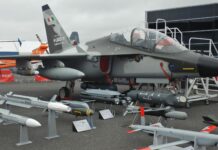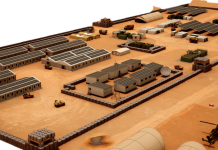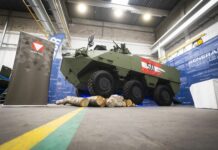The war in Ukraine has seen Austria finally begin to move towards re-investing in its armed forces, however, on more fundamental issues such as the question of Austria’s neutrality, Vienna refuses to budge.
Two years ago, this author spent a day with the Indian-run helicopter wing of the security forces of Mauritius. Their commander was sure, that his (HAL-built) Chetak-helicopters were the oldest of the Alouette-series in operation anywhere in the world. The author had to prove otherwise with photos, since in his native Austrian Federal Forces, the Alouette-III was introduced back in 1967!
This little episode (of which there are several similar examples) illustrates the extent to which this wealthy, developed European country’s defence spending has been politically neglected and generally unpopular for decades. However, the shockwaves reverberating through European security have now finally reached Vienna, located just a few hundred kilometres from Ukraine. Chancellor Karl Nehammer, together with Defence Minister Madamme Klaudia Tanner and Finance Minister Magnus Brunner appeared before the press on the morning of 6 October 2022 and said: “After February 24, everything changed.
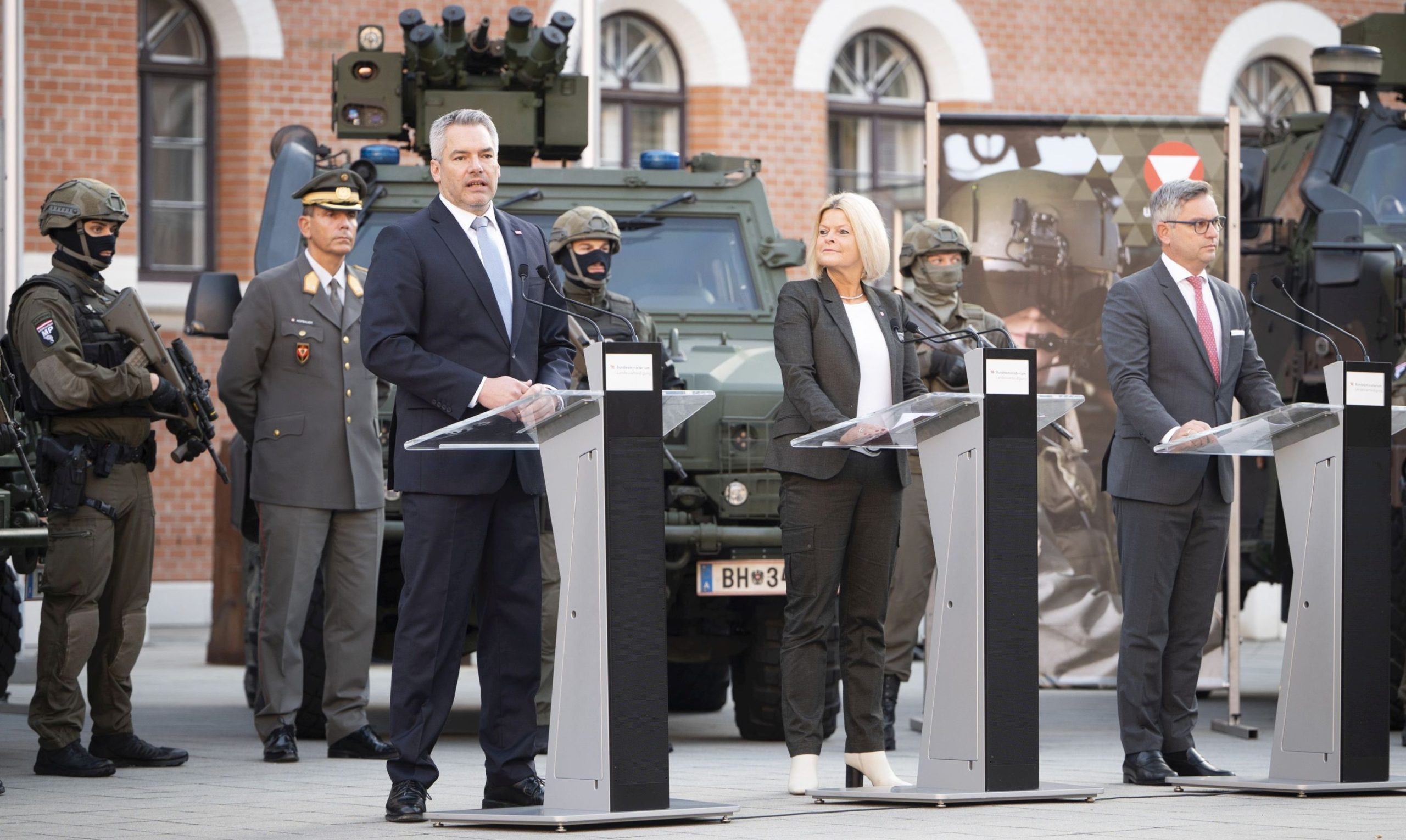
Politics is needed in order to make decisions and draw necessary conclusions. We have done this together with our coalition partners in the sense that we will increase the annual defence budgets to a total of EUR 16 billion until 2026 and to 1.5% in 2027.” Klaudia Tanner added that “the fresh funds would be directed primarily to procuring modern equipment and weapons. This marks the end of a decade of deprivation for the Bundesheer [Federal Armed Forces], but we can assure you that we will not buy anything that would not be extremely necessary.”
A Numbers Game
While so much is in fact ‘extremely necessary’, the ruling conservative-green coalition was not immune to an element of fudging the published figures and percentages. In March 2022, the government promised to raise defence spending up to 1% of GDP by 2023, the exact figure was forecast to be EUR 468.14 billion by the Austrian Institute for Economic Research (WIFO). Now it will grow by only EUR 680 million, to 0.7% of GDP, or from the current EUR 2.7 billion to EUR 3.38 billion. This equates to 0.72% of GDP, which remains far from the originally announced 1% of GDP target. It was also claimed on 6 October 2022, that defence spending would gradually grow to 1.5% of GDP by 2027 and that this would mean a budget of EUR 5.25 billion. However, when measured against the WIFO forecast, this would suggest that Austrian GDP in 2027 would fall from its current EUR 441.44 billion (USD 429 billion) to EUR 350 billion (USD 339 billion) by 2027, which is highly unlikely. For comparison, 1.5% of GDP even in 2022 would already mean EUR 6.62 billion, far more than envisaged for 2027. Often the stated figures and GDP percentage calculations have not added up.
Obfuscation of numbers aside, the EUR 16 billion earmarked for the Austrian military out to 2027, in addition to EUR 16.6 billion for acquisitions out to 2032, is still unprecedented by the standards of Austria’s 2nd Republic, and the government deserves credit for achieving this at a time when it is facing multiple crises. After comprehensive assessments carried out by the General Staff in recent months and according to the resulting ‘Federal Army Development Plan 2032’, these welcome fresh funds will serve to strengthen the Bundesheer in the core area of military national defence and generate capabilities to survive on the future battlefield. The key areas of prioritised materiel investment for the first time reach a 20% budget share, and comprise:
1) Improving the mobility of emergency services for the forces.
2) Improving force protection.
3) Self-sufficiency and improving readiness.
Austria’s Shopping List
With regards to procurement, various examples have been openly communicated, and others have been stated to the author. First among these is the expansion of the protected vehicle fleet with further Austrian-built General Dynamics European Land Systems (GDELS) Pandur Evo 6×6 vehicles, as well as urgently needed transport vehicles. Additionally, Austria’s Leopard 2A4s need to be upgraded with a night-fighting capability and improved protection.
On the air side, the first of 18 Leonardo AW169B and AW196MA multi-role helicopters are already in production and two should reach Langenlebarn airbase in December 2022, where they will replace the aforementioned 50+ year-old old ‘Alouettes’. Supplementing this will be the upgrade of Austria’s nine (and reportedly may include three additional) S-70 BLACK HAWKs, which are due to receive new cockpits from ACE-Aeronautics in Alabama.
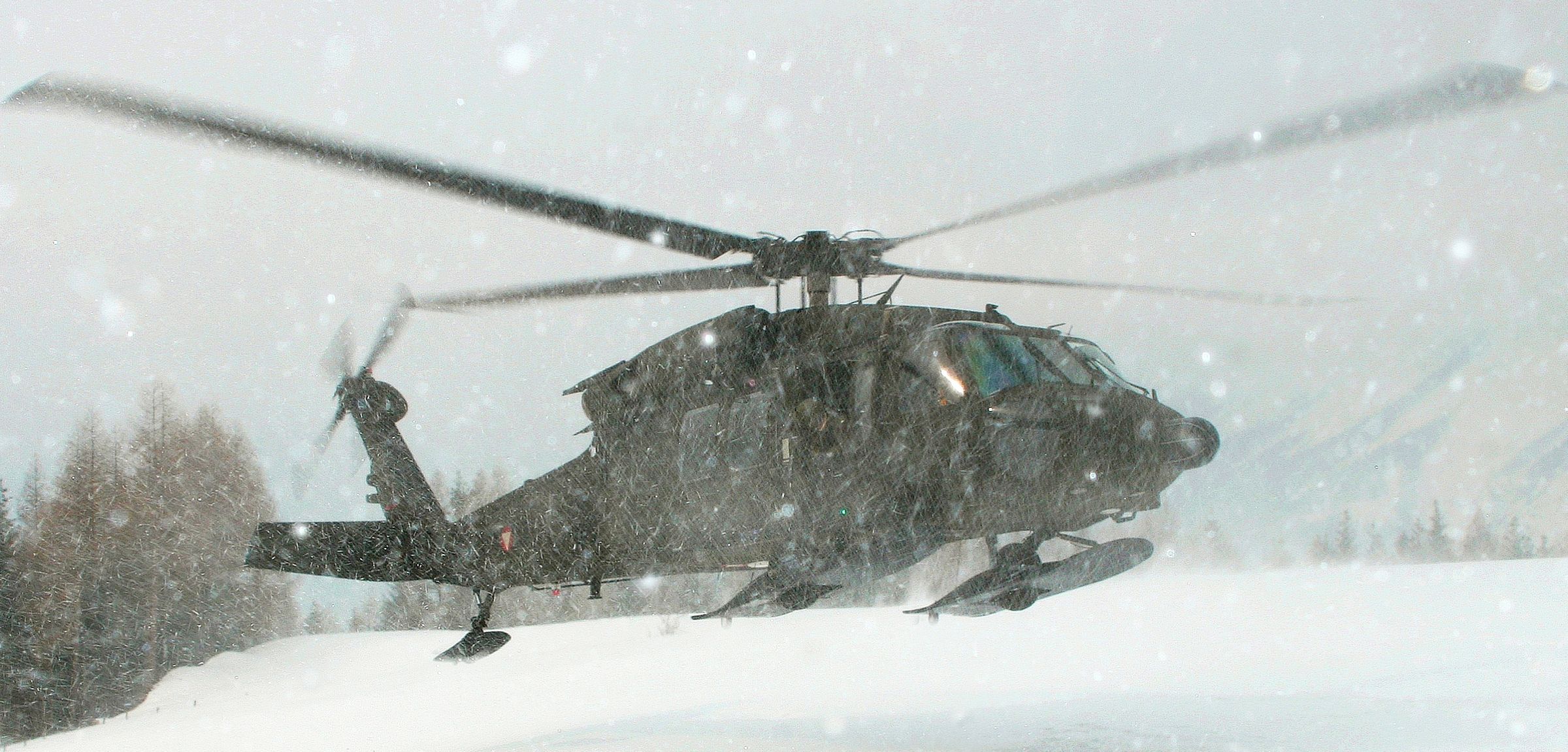
Credit: Georg Mader
Austria’s remaining helicopter fleet of aging AB-212s and OH-58Bs will also have to be either modernised or gradually replaced. The Austrian Air Force’s three ex-British C-130Ks (built in 1967 and 1968) have now been earmarked for replacement by 2029, and Embraer has offered their KC-390 for this role. The aircraft has an emerging user community, comprising The Netherlands, Portugal and Hungary, and during the recent Ostrava NATO Days 2022 air show, the Austrian Air Force leadership was reportedly very impressed with the aircraft.

Austria’s 15 single-seat EUROFIGHTER TYPHOONs are presently only capable of conducting air-surveillance missions during the daytime, since they are missing key-features for night fighting. This is due to their removal as a requirement by Minister of Defence Norbert Darabos in 2007, after he was unable to fulfil his election promise to cancel procurement of the aircraft altogether. Regarding their modernisation, this summer Airbus suggested integration of Rafael’s LITENING-V targeting pod to provide the missing night targeting capability, thereby enabling the craft to meet the 24-hour quick reaction alert (QRA) readiness standard. Airbus also suggested integration of the AIM-120C8 AMRAAM to address the thus far absent beyond visual range (BVR) engagement capability. The most difficult hurdle to overcome seems to be the Austrian TYPHOONs electronic countermeasures (ECM), since many potential components are not compatible with Tranche 1 TYPHOONs. It is possible that missile approach warners (MAWs) will be incorporated into existing aircraft, but no new TYPHOON aircraft are planned, not even used two-seaters. Given that they are scheduled to reach the end of their service life in the early 2030s, considerations on a successor have already begun, among which the F-35 is being considered, with Switzerland and Finland’s decisions to procure the aircraft being noted by Austrian military leadership.
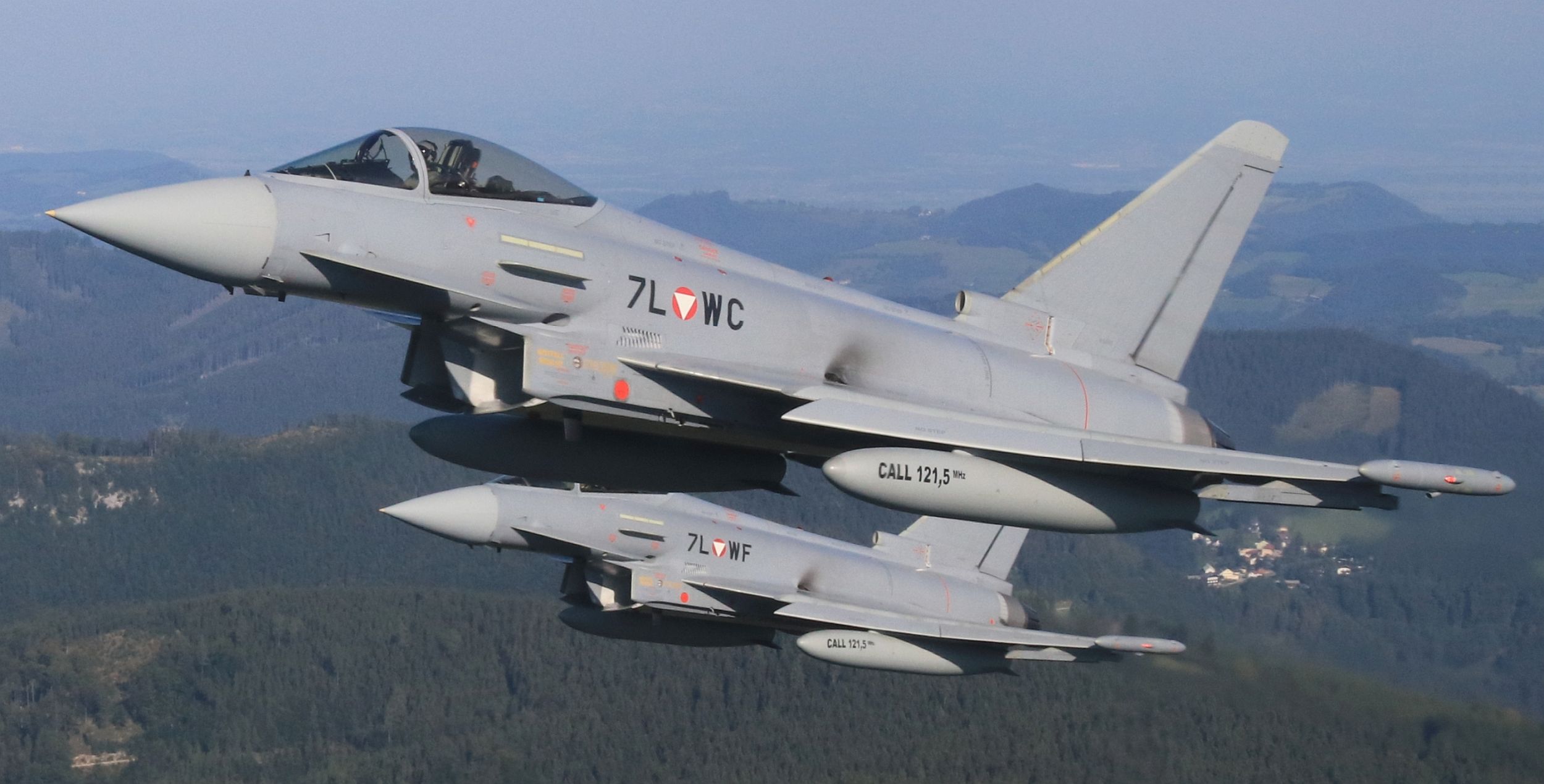
In terms of training, Austria’s Saab-105 jet-trainer was phased out in 2020 following 50 years of service and is reportedly highly missed. In this sphere, Leonardo’s M345 or better yet the M346FA MASTER are obvious favourites, with the Czech L-39NG a good alternative.
Elsewhere, Austria ground-based air defence (GBAD) is largely obsolescent, with Oerlikon GDF-005 35 mm cannons requiring an upgrade, such as the capability to fire Rheinmetall’s AHEAD munitions. Austria also operates MBDA’s MISTRAL system, however this operates at very short ranges, with the result that all of Austria’s presently-available GBAD would be required to protect key objects in Vienna alone. To alleviate this problem and provide a new outer defensive layer, a surface-to-air missile (SAM) system with a range of up to 40 km is now on the agenda.

Despite the need for improvement becoming recognised, Austria nonetheless still has many unfilled capability gaps, including in:
- Modern infantry equipment and protection.
- Reconnaissance UAVs.
- Counter-UAV systems.
- Electronic warfare systems.
- Modern command and control (C2) systems.
With regards to procurement, various examples have been openly communicated, and others have been stated to the author. First among these is the expansion of the protected vehicle fleet with further Austrian-built General Dynamics European Land Systems (GDELS) Pandur Evo 6×6 vehicles, as well as urgently needed transport vehicles. Additionally, Austria’s Leopard 2A4s need to be upgraded with a night-fighting capability and improved protection.
On the air side, the first of 18 Leonardo AW169B and AW196MA multi-role helicopters are already in production and two should reach Langenlebarn airbase in December 2022, where they will replace the aforementioned 50+ year-old old ‘Alouettes’. Supplementing this will be the upgrade of Austria’s nine (and reportedly may include three additional) S-70 BLACK HAWKs, which are due to receive new cockpits from ACE-Aeronautics in Alabama. Austria’s remaining helicopter fleet of aging AB-212s and OH-58Bs will also have to be either modernised or gradually replaced. The Austrian Air Force’s three ex-British C-130Ks (built in 1967 and 1968) have now been earmarked for replacement by 2029, and Embraer has offered their KC-390 for this role. The aircraft has an emerging user community, comprising The Netherlands, Portugal and Hungary, and during the recent Ostrava NATO Days 2022 air show, the Austrian Air Force leadership was reportedly very impressed with the aircraft.
Austria’s 15 single-seat EUROFIGHTER TYPHOONs are presently only capable of conducting air-surveillance missions during the daytime, since they are missing key-features for night fighting.
This is due to their removal as a requirement by Minister of Defence Norbert Darabos in 2007, after he was unable to fulfil his election promise to cancel procurement of the aircraft altogether. Regarding their modernisation, this summer Airbus suggested integration of Rafael’s LITENING-V targeting pod to provide the missing night targeting capability, thereby enabling the craft to meet the 24-hour quick reaction alert (QRA) readiness standard. Airbus also suggested integration of the AIM-120C8 AMRAAM to address the thus far absent beyond visual range (BVR) engagement capability. The most difficult hurdle to overcome seems to be the Austrian TYPHOONs electronic countermeasures (ECM), since many potential components are not compatible with Tranche 1 TYPHOONs.
It is possible that missile approach warners (MAWs) will be incorporated into existing aircraft, but no new TYPHOON aircraft are planned, not even used two-seaters. Given that they are scheduled to reach the end of their service life in the early 2030s, considerations on a successor have already begun, among which the F-35 is being considered, with Switzerland and Finland’s decisions to procure the aircraft being noted by Austrian military leadership.
How Much is Needed?
Unlike in Germany, conscription in Austria continues to apply to all adult males for six months, which may potentially put the Alpine nation’s armed forces at a better starting point than may initially seem apparent.
Additionally, with the exception of Switzerland, Austria is surrounded by NATO member states. Thus, Austria is de facto outsourcing much of its conventional territorial defence to NATO. In pure geographic terms, any likely assault on Austria would first have to pass through another NATO member, however Austria itself has so far refrained from becoming a NATO member, though it is a member of NATO’s Partnership for Peace (PfP) programme. Therefore, in the corridors of European power and as well as by a few domestic voices, Austria has been referred to as a free rider in security policy.
Historically, Austria’s neutral status has been broadly popular, and in contrast to Finland and Sweden, since Russia’s invasion of Ukraine, neutrality has even increased in popularity in Vienna. Recent surveys have shown that 70% feel “protected” even by the term “neutrality”, and are opposed to Austria’s NATO-membership. Such sentiments are often seen in high-circulation tabloids and their fora, which show considerable levels of Anti-Americanism and claims of understanding Vladimir Putin’s deeper historical reasons for starting the war.
Consequently, Chancellor Nehammer, as with his predecessors, saw that there is little to gain with antagonising the Austrian public over the question of neutrality and knew he could easily lose elections because of it. Nehammer therefore quickly extinguished several emerging political discussions on reconsidering neutrality in the wake of the War in Ukraine, declaring “there is no discussion on neutrality. Full Stop.” Austria’s self-declared military neutrality from 1955 historically meant no entry into an alliance and no permanent bases for foreign troops. While this may have been meaningful during the Cold War, today it partly hinders Austria from attaining greater military cooperation with other like-minded ‘Western’ states, and thus from strengthening collective security for the whole of Europe.
Sooner or later, perhaps driven by future developments beyond its control, Austria will likely have to engage in a deeper debate on its future security orientation. Until then, the Bundesheer will remain a relative outsider to NATO.
Georg Mader



